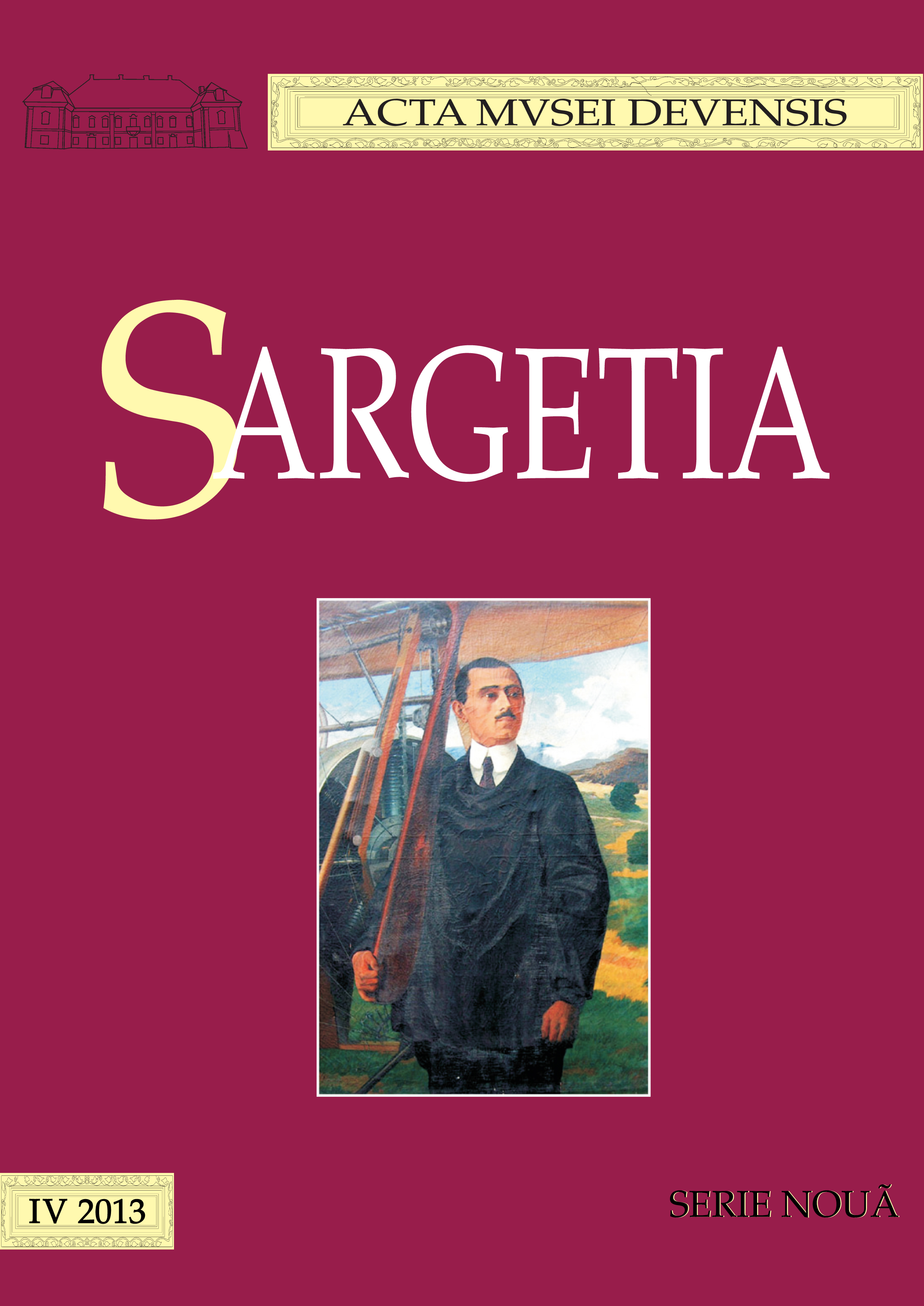Piese sculpturale romane recuperate din albia râului Mureş
Roman Sculptural Monuments Recovered from the Mureş River
Author(s): Marius Gheorghe Barbu, Radu Iustinian ZăgreanuSubject(s): Archaeology
Published by: Editura Altip
Keywords: roman sculptural monuments; Micia, Mureş River
Summary/Abstract: In the summer of 2012, after a prolonged drought, the Mureş River’s water level dropped drastically, so that the bed of the river began to show several visible monuments that normally were hidden under water. Fishermen and local journalists have noticed, since last year, various presumed Roman monuments, upstream of the village Lesnic or around the village Uroi. Based on these facts and knowing that in the area of Micia Roman settlement, Mures River has eroded over time an important part of the site, we checked out the river nearby. We have noticed that in the North of the thermal buildings (Pl. I/1), where the river bottom was rocky, the water withdrew, leaving behind the partially dried up river bed a width of 30-40 meters. Therefore, in the mud or in the shallow water appeared several blocks of stone with traces of processing (Pl. I/2). Most of them were represented by rectangular blocks of Măgura Uroiului andesite, but among them we saw some great pieces that we considered as a priority for recovery (Pl. I/3).In early October of the same year (although the water level was higher than in previous months), with the management support of Museum of Dacian and Roman Civilisation Deva and with a team of workers, we were able to recover three of these monuments (Pl. II/1).The first monument (Pl. II/2a-e), severely damaged by water, was discovered almost entirely, but only with the left part having all the decorations preserved. The important dimensions of the monument, which with the base could have reached a height of 150 cm, the quality of workmanship still preserved, indicates an important achievement of the local shop, most likely a honorary statue base or votive statue, though a funeral function should not be underestimate.The second one (Pl. III/1a-b) is fragment of an altar and is highly affected by water corrosion and only its pediment and very little of the epigraphic field were saved.The third one is a reused column shaft (Pl. III/2a-b). The second functionality of this piece is difficult to determine accurately, most likely it was a form of water gutter used in a household.The three monuments lacking any epigraphic information, with few stylistic elements, that helped in their typological identification and classification, are not some outstanding discoveries. However, they give an essential idea of how the monuments of the Roman sculptures were found and recovered during centuries. The bibliography of the Roman monuments discovered in Dacia contains a significant number of recoveries from river beds, but, unfortunately, these were very late investigated by specialists and their valuable information was lost.
Journal: Sargetia. Acta Musei Devensis
- Issue Year: 2013
- Issue No: 4
- Page Range: 231-238
- Page Count: 8
- Language: English, Romanian

